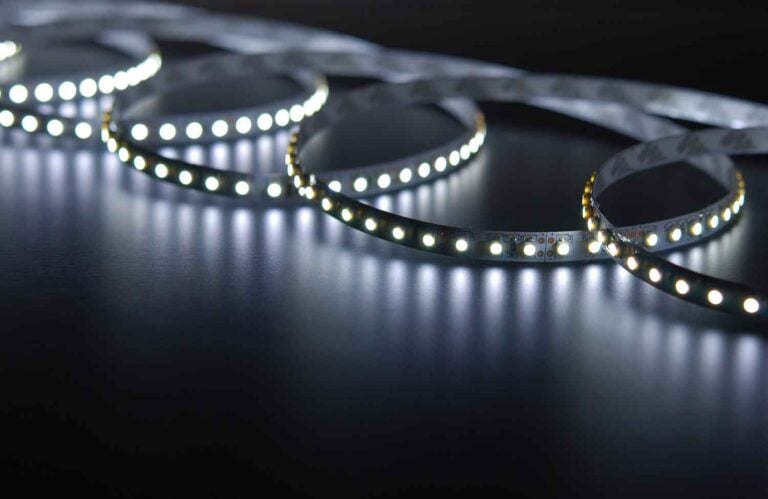Cool White vs Neutral White: Choosing the Best Lighting for Your Space
Colour temperature in lighting plays a crucial role in creating the desired ambiance and can affect your mood and productivity. Cool white light is on the higher end of the Kelvin scale, typically above 5000K, offering a bright and energetic feel akin to natural daylight. It is ideal for environments where focus and clarity are essential, such as offices or commercial settings.
Neutral white, residing around the 4000K mark on the Kelvin scale, strikes a balance between the warmth of yellow tones and the refreshing qualities of blue light. This temperature provides a more comfortable and inviting light for living spaces, being neither too stark nor too cosy. It is often favoured for areas where you spend a considerable amount of time and require a light that does not strain the eyes.
Key Takeaways
- Cool white light is bright and stimulating, suitable for task-oriented spaces.
- Neutral white light offers a balanced and inviting illumination, perfect for relaxed environments.
- The choice between cool and neutral white significantly impacts the mood and functionality of a space.
Defining Cool White and Neutral White
When you choose lighting, understanding the difference between cool white and neutral white is crucial as it affects the atmosphere and functionality of your space.
Colour Temperature Scale
The colour temperature scale is measured in Kelvin (K) and it tells you how warm or cool a light source is. The scale ranges from warm, lower Kelvin numbers to cool, higher Kelvin numbers. A warm white light typically has a Kelvin of less than 3000K, while cool white exceeds 4500K. Neutral white falls in the middle, usually between 3000K and 4500K.
Cool White Characteristics
Cool white lighting is defined by a higher Kelvin number, usually above 4500K, and emits a bright, crisp light. It leans towards the blue end of the spectrum and is ideal for:
- Creating a vibrant, alert atmosphere
- Spaces that require clear visibility, like kitchens and offices
Neutral White Characteristics
Neutral white lighting has a more balanced appearance, with a Kelvin range from 3000K to 4500K. It brings the following benefits:
- More comfortable for general living spaces
- Provides a natural daytime light quality without being too harsh or too warm
Applications and Contexts
Choosing the right colour temperature of LED lighting, being either cool white or neutral white, is fundamental in achieving the desired effect and functionality in different settings.
Home and Residential Use
In your home, cool white lighting (above 5000K) provides a bright and vibrant light that simulates daylight. It’s frequently used in areas that require focus and clarity, such as kitchens, bathrooms, and home offices. On the other hand, neutral white lighting (around 4000K) offers a balance between warm and cool light, suitable for living rooms and bedrooms where a cosy yet sufficiently illuminated atmosphere is desired.
Commercial and Industrial Settings
Cool white illumination is ideal for task-centric environments such as factories, hospitals, and offices due to its ability to enhance alertness and concentration. Neutral white light, emitting a softer glow, is often chosen for retail spaces and art galleries, where it provides accurate colour representation without the harshness of cool white light.
Impact on Mood and Ambience
The lighting you choose significantly influences the mood and ambience of a space. Cool white light, with its higher colour rendering index (CRI), energises an environment. Neutral white, by rendering colours evenly and softly, promotes a welcoming and relaxed atmosphere, making it fitting for spaces aimed at comfort or detailed visual tasks.
Choose your lighting based on the activities that take place in the space and your personal preferences regarding brightness and warmth.
Choosing Between Cool White and Neutral White
When selecting the right colour temperature for your lighting, understanding the difference between cool white and neutral white options is pivotal. This choice can impact the mood and functionality of the space.
Cool White (>4500K) illuminates an area with a bluer, more vibrant hue. It’s beneficial for spaces that require focus and clarity, such as a home office, garage, or kitchen. Cool white effectively mimics daylight, which can enhance productivity and alertness.
In contrast, Neutral White (3000K – 4500K) offers a more balanced, natural light. It’s often compared to the midday sun and is versatile enough for various settings—residential or commercial. It provides a warm, inviting atmosphere without the yellow tint of warm white lights, making it suitable for living rooms, hallways, and retail spaces.
| Colour Temperature | Lighting Characteristic |
|---|---|
| Cool White | Crisp, alert, daylight-like |
| Neutral White | Balanced, natural, without the intensity of cool white |
When choosing between the two, consider:
- The purpose of the room: Tasks demanding attention to detail fare better with cool white.
- The mood you want to set: For a welcoming space, neutral white is preferable.
- The existing decor: Cooler whites complement modern, minimalist styles, whereas neutral whites work well with a broad range of interior designs.
Selecting the correct colour temperature will transform the functionality and aesthetic of your space. Consider the balance between warmth and clarity to meet your specific needs.





